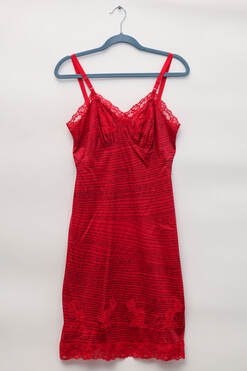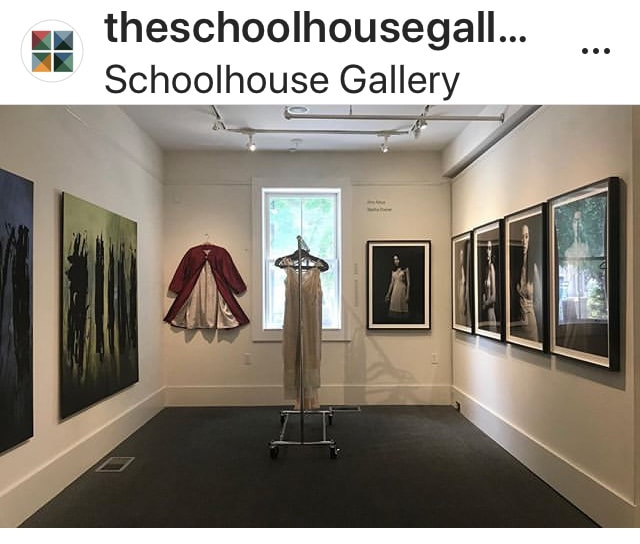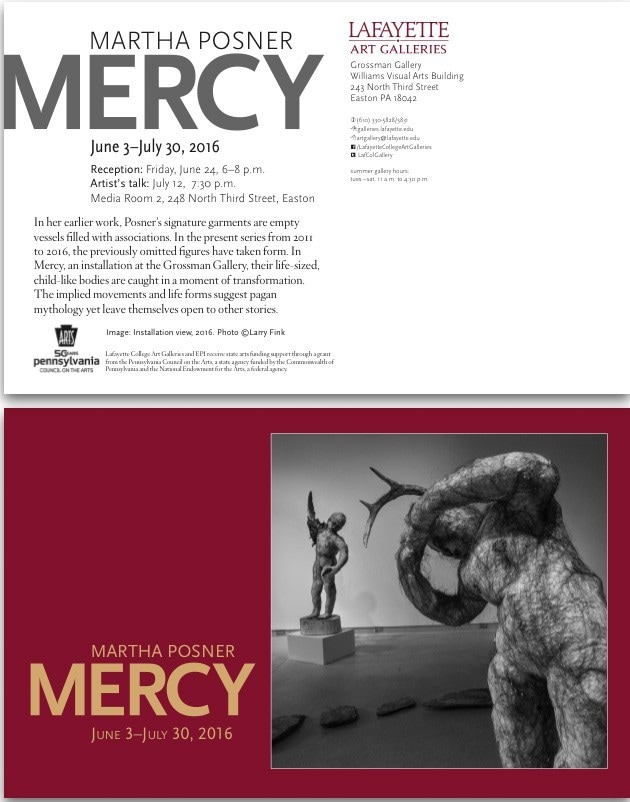 ©MarthaPosner ©MarthaPosner June 12-Jul 17, 2019 Featuring Amy Arbus and Martha Posner At: The Schoolhouse Gallery, Provincetown, MA Martha Posner and Amy Arbus's photo and mixed media collaboration keeps the #MeToo discussion going. The two artists will present an installation of Amy's photographs of women wearing Martha's handwritten garments. Inspired by women everywhere, the project pairs art and the female experience, bringing awareness to stories that need to be seen and heard. Viewers will also be able to share their stories in an anonymous notebook on view. See more Here. 7/19/2018 0 Comments Upcoming Show At Sardoni GalleryExhibition: Loud Silence: Expressions o Activism Exhibition Dates: October 16- December 16 2018 Artists featured: Judy Chicago, Kara Walker, Ana Mendieta, Alison Saar, Lien Trong, Hung Liu, Diane Edison, Liza Lou, Nancy Spero, Julie Heffernan, Elizabeth Catlett, Betye Saar, Lesley Dill, Ilona Granet, Donna Lief, Jessie Oonark, Faith Ringgold, Kiki Smith, Zoe Strauss, Jenny Holzer, Cannupa Hanska Luger, Sobia Ahmad, Nicholas Galanin, Sara Rahbar, Lorna Simpson, Helen Zughaib, Dyke Action Machine, Rachel Farmer, Linda Stein, Ellen Shumsky, Annie Sprinkle, Alex Donis, Miller and Shellbarger, Theodore Newman, Harvey Milk, Rashid Johnson, Juan Logan, Martha Posner Exhibition Description: The artist’s role is to serve as society’s mirror. In that role, artists have been advocates for marginalized populations for years. This exhibition examines communities who have been forced into silence because of society and circumstance and the artists who create an awareness of their circumstances. As a result, artwork created becomes a form of activismsometimes using their silence or contemplative practice as a gesture of protest, sometimes allowing the artwork to scream louder than words are able. Important to the exhibition is the human figure. In many cases, judgments are made and rights compromised due to gender, race, and sexuality. The works featured demonstrate the unique perils of living while a woman, while black, while indigenous, while LGBTQ, and while an immigrant. Artists have come to use the body as an integral expression of their activism. The exhibition will distinguish between depictions of the body (figure study) and works OF the body. Those who have been denied a voice are forced to scream the loudest. This exhibition calls on the viewer to examine their own blind-spots and understand suffering they may have never known, through art.
http://books.wwnorton.com/books/Divine-Nothingness/
Divine Nothingness POEMS Gerald Stern (Author) From the National Book Award–winning author of This Time, a new volume of poems that explore the very nature of existence. Divine Nothingness is a meditative reflection on the poet’s past and an elegy to love and the experience of the senses in the face of mortality. From the Jersey side of the Delaware River in Lambertville, Gerald Stern explores questions about who and why we are, locating nothingness in the divine and the divine in nothingness. SHOW: Animal Animal Mammal Mine
GENRE: Dance/theater GROUP: Penn Dixie Productions ATTENDED: Sun., April 14, 8 p.m., Underground Arts CLOSES: April 20 BRIEF DESCRIPTION: A devised theater piece that grows out of extensive interviews with women who have inherited the technology of the 60s. It weaves these characters together with dance, projections, and the breathtaking hybrid sculptures of Martha Posner. WE THINK: Writer-director Anisa George concocts a fascinating adventure, based on conversations with women about reproduction that were expansive enough to explore concerns about climate change and the nature of life itself. As with other works of this style (think Pig Iron Theater Company, New Paradise Laboratories, Applied Mechanics, and anything staged by Mark Lord), we're embraced by a dizzying variety of fascinating images, action, and sounds — most of them showing low-tech innovation, like Martha Posner's wearable sculptures — from an on-stage glacier and menacing animal activists to the giddy thrills of actresses singing while circling the audience on bicycles and discovering their capacity for flight. Set designer Amy Rubin uses Underground Arts' basement space well, surrounding us and a deep, sea-blue playing area with eerie bare trees. Often funny while also surprisingly moving, Animal Animal Mammal Mine makes the question of bringing children into an ailing world real and personal, and balances that worry and cynicism with a hopeful message about life's resilience. —Mark Cofta 4/10/2012 0 Comments Animal Animal Mammal Mine: A Meditation on Fertility, Ecology, and the Fate of Humankindwww.penndixieproductions.org
Animal Animal Mammal Mine An original dance-theater piece, part of the Philadelphia International Festival of the Arts. Who: Penn Dixie Productions in collaboration with Martha Posner Previews: April 10th and 11th Performances: April 12th -14th and 16th -20th Where: Underground Arts, 1200 Callowhill Street, Philadelphia Pa. 19108 2/23/2012 0 Comments Frozen Charlotte and Other StoriesOpening February 23- March 31st 2012
Accola Griefen Gallery 547 West 27th Street #634 New York, New York 10001 Accola Griefen
For Immediate Release: February 23th – March 31, 2012 Reception: Thurs., Feb., 23 from 6pm to 8pm NEW YORK, NY, FEBRUARY 2012 - ACCOLA GRIEFEN GALLERY is pleased to announce the opening of –Martha Posner: Frozen Charlotte and Other Stories. The exhibition will open with a reception on Thursday, February 23 from 6 - 8 PM and continue through March 31, 2012. Martha Posner’s work is marked by an “emotional rawness” which is due in part to her evocative and corporeal transformation of materials: beeswax, synthetic hair, pigment, mud, fabric and fibers. (Ann Landi, ArtNews) Her sculpture and drawing combine autobiography, mythology, alchemy, history and fairy tales. In her earlier work, Posner’s signature garments are empty vessels filled with associations. In the artist’s newest sculptural series, Under, the previously omitted figures have taken form. Their life-size child-like bodies are caught in a moment of transformation. The implied movements and added life forms suggest pagan mythology yet leave themselves open to other stories. In addition to the sculptural work, a Victorian doll that was given to girls as a cautionary tale at the turn of the 20th century inspires the drawings in the Frozen Charlotte Series. All the work addresses the questions at the core of Posner’s practice: What makes an object greater than its materials? Why is the mask of a shaman or the surface of a Greek icon more than feathers, wood and paint? When is the moment of transformation? Martha Posner has had solo exhibitions in the United States and abroad: Centro Cultural de Cooperacion, Buenos Aries, Argentina; Heidi Cho Gallery, New York City; The Allentown Art Museum, Allentown, PA; The Hunterdon Museum of Art, Clinton, NJ; Albright College Museum, Reading, PA; The Birmingham Museum of Art, Birmingham, AL and The Cleveland Museum of Art, Cleveland OH, among others. Her work is held by numerous private and public collections including The George Gund Foundation, The Allentown Art Museum, The Butler Museum of Art, Youngstown, OH; and the Great Northern Corporate Center, Cleveland, OH. She has received the Mary H. Dana Award from Rutgers University, The Experimental Printmaking Award from Lafayette College as well as Fellowships from The Ragdale Foundation and The Virginia Center for the Creative Arts. Posner lives and works on a farm in Martins Creek, Pennsylvania. Accola Griefen Gallery is open Tuesday through Saturday from 11 AM to 6 PM. For more information visit accolagriefen.com, contact Kat Griefen at [email protected] or call 646-532-3488. |
|

